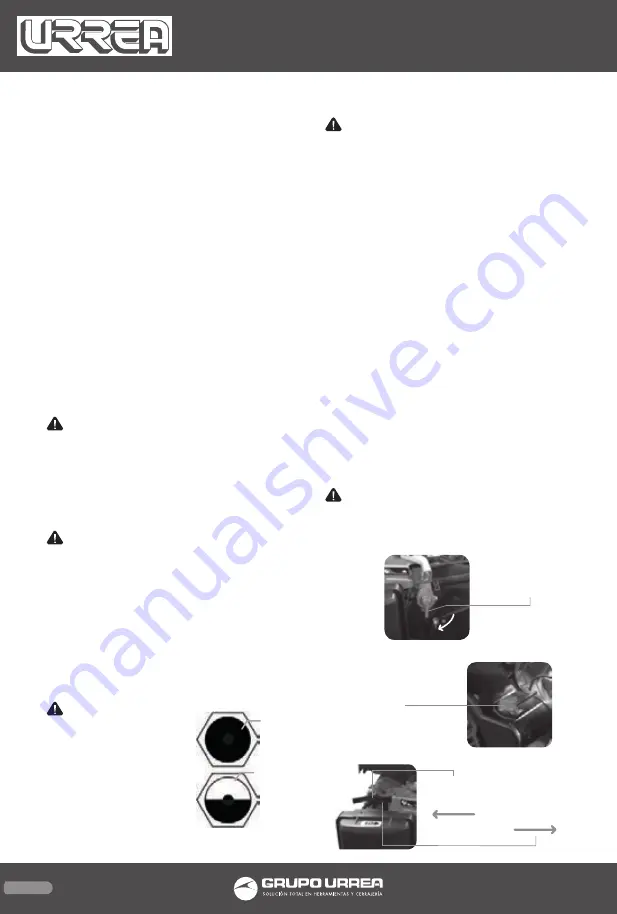
18
and must be disposed of in accordance with
local, state, and federal laws and regulations.
GENERAL REQUIREMENTS. The piping, fittings,
air receiver tank, etc. must be certified safe
for at least the maximum working pressure of
the unit. Use hard-welded or threaded steel
or copper pipes and cast iron fittings that are
certified safe for the unit’s discharge pressure
and temperature. DO NOT USE PVC PLASTIC IN
THE COMPRESSED AIR DISCHARGE LINE. Use
pipe thread sealant on all threads, and make
up joints tightly to prevent air leaks.
CONDENSATE DISCHARGE PIPING. If installing
a condensate discharge line, the piping must
be at least one size larger than the connection,
as short and direct as possible, secured tightly
and routed to a suitable drain point or waste
container. Condensate must be disposed of in
accordance with local, state, and federal laws
and regulations.
WARNING: If an after cooler, check valve,
block valve, or any other restriction is added
to the compressor discharge, install a prop-
erly sized ASME approved safety/relief valve
between the compressor discharge and the
restriction.
COMPRESSOR LUBRICATION
CAUTION: Do not operate without lubri-
cant or with inadequate lubricant. URREA is
not responsible for compressor failure caused
by inadequate lubrication.
NOTE: For compressors with this feature, use
two stages oil with viscosity of 70; DO NOT use
automotive oil.
FILLING PROCEDURES:
1. Unscrew and remove the oil fill plug.
2. Fill the crankcase with lubricant.
3. Replace the oil fill plug HAND TIGHT ONLY.
CAUTION: Do not re-
move the oil fill plug while
the compressor is running.
Refer to the following ta-
ble for crankcase capacity.
Use one of the following
methods illustrated to de-
termine when the crank-
case is full.
STARTING THE UNIT
WARNING: Gasoline is very dangerous. Seri-
ous injury or death may result from fire caused
by gasoline contacting hot surfaces.
1. Do not fill the fuel tank with the engine run-
ning.
2. Turn off the engine and wait 2 minutes be-
fore filling the tank.
3. Do not spill fuel while refilling tank.
4. Do not mix oil with gasoline.
5. Follow all the instructions and warnings in
the engine manual.
PRE-START PREPARATION
Before starting the compressor, check for loose
or missing parts and for any damage that may
have occurred during shipment.
STARTING THE ENGINE
1. Open the fuel valve.
2. Turn on the unit.
3. Close the choke.
4. Pull the starter cord a bit until you feel some
resistance and continue to pull hard until the
engine starts.
5. Open the choke.
6. Move the throttle lever to “RUNNING”.
IMPORTANT: Do not allow the starter cord
to snap back against the engine. Gently return
it to its original position, avoid unnecessary
damage to the engine.
Over-
filled
Optimal
quantity
2
TURN THE
ON/OFF SWITCH
TO “ON”
POSITION
3
5
CLOSE
CHOKE
OPEN
CHOKE
1
OPEN FUEL
VALVE







































